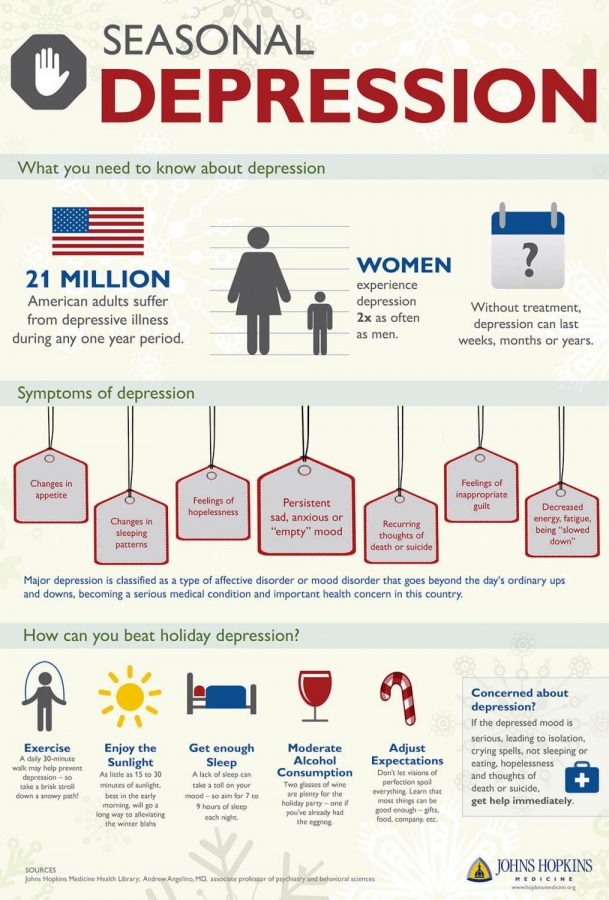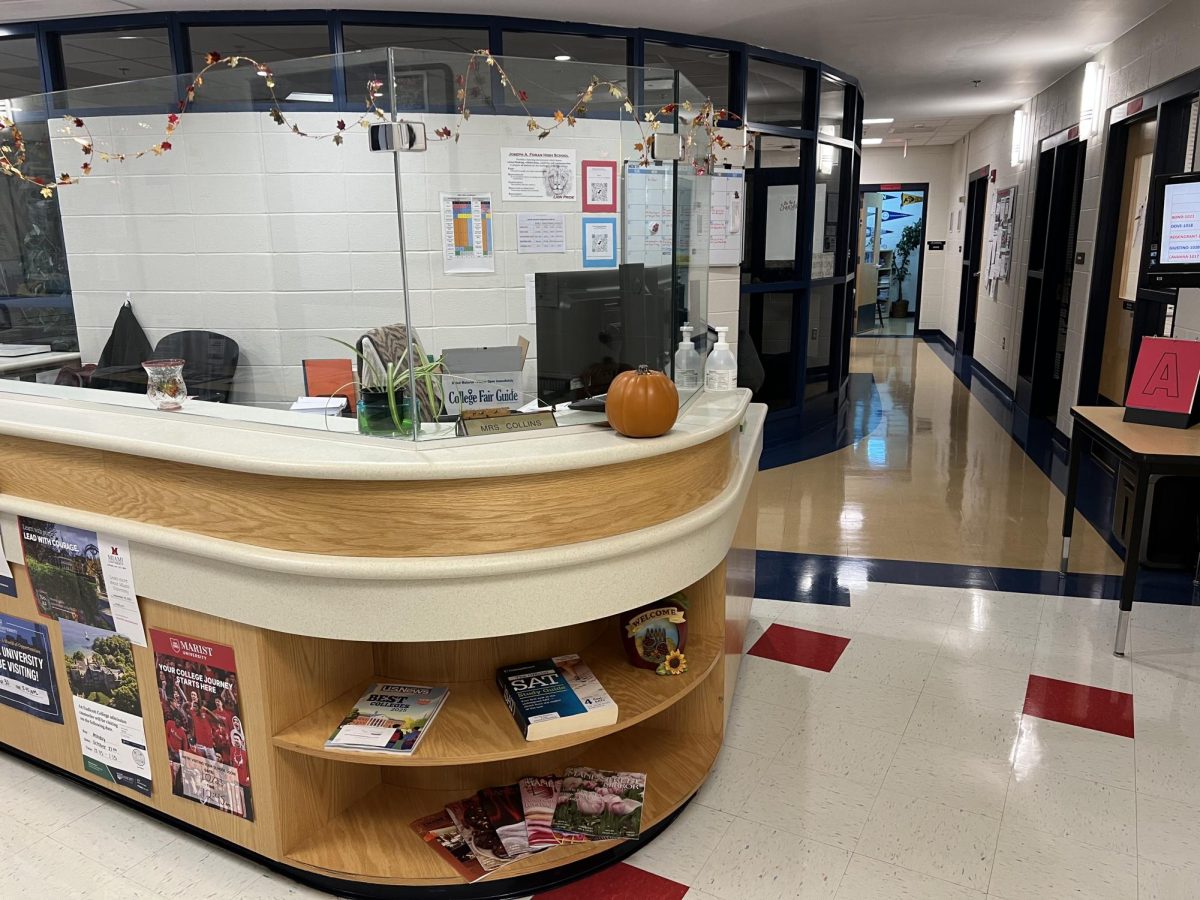Analyzing Seasonal Depression
An infographic about the statistics and symptoms of seasonal affective disorder (SAD). Photo courtesy of Johns Hopkins Medicine.
January 8, 2020
Jasmine Gaston
Staff Writer
Seasonal affective disorder (SAD) is a type of depression that occurs only at a specific time in a year. In most cases, the early fall to the end of the winter is where the majority of people with SAD struggle the most. There are a few ways to treat seasonal depression, including light therapy. During the fall or wintertime, one would sit in front of a device called a light therapy box that would radiate artificial light. An internal biological clock is a group of nerves in the brain that help with creating a sleep cycle, with the help of determining when night and day are.
With the amount of daylight decreasing in the fall and winter, this could interrupt people’s daily routines, making them feel depressed. According to a survey by Psychology Today, there are estimated to be more than 10 million Americans suffering from SAD. The most popular age ranges are from 18-30, and it is four times more common in women than men.
Some symptoms of seasonal depression may include: feeling depressed for most of the day, low energy, inability to concentrate, anxiety, irritability, fatigue, increased need for sleep, and other signs that happen during a time of depression. However, for the rarer cases of depression that takes place during the summer, some symptoms are weight loss, decreased appetite, and difficulties sleeping.
Arnold Lieber, MD from Pyscom states, “Sure, everyone has days in the winter when they feel sluggish or unmotivated. But if your symptoms are causing disruptions in your life, then never hesitate to reach out to a professional. If symptoms occur for days at a time, you notice major shifts in sleeping or eating, you are withdrawing socially, or the activities that usually boost your mood don’t work, then it’s time to pick up your phone” (Pyscom, 2019).
The reason why light therapy could be an effective way of treating SAD is that it could resemble the sunlight which the person is losing during fall and winter, causing their depression. However, the UV lights could increase the risks of skin cancer, so verbal therapy is also an alternate and safer option. Self-care, like eating well and exercising, could also make a big difference in how someone with seasonal depression feels. They could become more motivated and happy, improving their symptoms of SAD.







